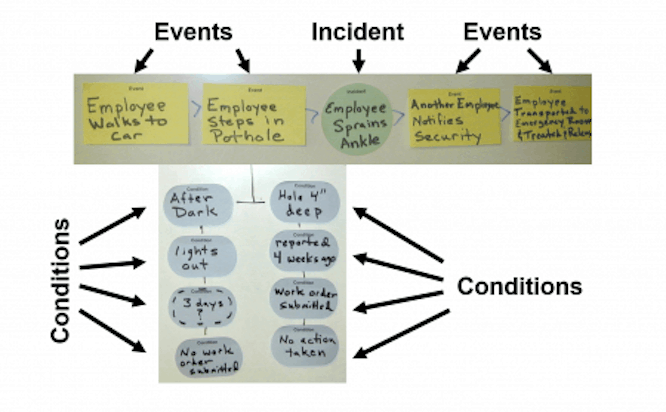Minimum Requirements for Fast, Effective Root Cause Analysis

Spin-a-Cause™ … The Fastest Root Cause System
Everybody knows that Spin-A-Cause™ is the fastest way to find root causes. However, you may not be happy with the performance improvement you get using the system.
Yes, you may save time initially when you do your investigation with a fast, easy system. Still, after you re-investigate the incident when it happens repeatedly, you may spend much more time, lose much more money, and fail to prevent much suffering.
Is your quick and easy root cause analysis good enough for “simple incidents?” If the incidents keep repeating, you might as well use Spin-A-Cause™.
So, what is the minimum investigative effort and tools you need to conduct a fast investigation with effective results?
Minimum Requirements for Fast, Effective Root Cause Analysis
We wrote a book that answers this question:
Using the Essential TapRooT® Techniques
to Investigate Low-to-Medium Risk Incidents

Here is the process outlined in the book…

First Step – What Happened?
The first thing you need to understand is:
“WHAT HAPPENED?”
If you don’t understand what happened, you will never correct the problems that caused the incident. We use a SnapCharT® Diagram to develop an easy-to-understand timeline of what happened.
A simple SnapCharT® Diagram at the start of an investigation is shown below.

Should You Continue?
Don’t waste time investigating incidents that don’t provide an opportunity to learn.
Yes, you should investigate precursor incidents, but many simple incidents aren’t precursors for something worse and don’t deserve a full investigation. That’s why, in this process, the second step is to decide if the incident is worthy of further investigation.
Once you understand what happened, you must decide if further investigation is needed or if you should STOP, record what you know, and end the investigation.
Stopping the investigation when you decide it isn’t worth investigating is a real time saver. You save by not wasting your time investigating AND not wasting your time implementing worthless corrective actions.
But if the incident IS worth investigating, you must apply the remaining steps to develop effective corrective actions. This includes identifying Causal Factors, root causes, and corrective actions.
Finding Root Causes & Effective Fixes
The TapRooT® System helps save time by guiding the root cause analysis by using the Root Cause Tree® Diagram and the Root Cause Tree® Dictionary. It also helps develop practical, effective corrective actions by using the Corrective Action Helper® Guide.

All these techniques:
- SnapCharT® Diagram
- The Root Cause Tree® Diagram and Dictionary and
- The Corrective Action Helper® Guide
are included in the patented TapRooT® Software.
Learn More About Fast, Effective Root Cause Analysis

Where can you learn the fastest, most effective way to investigate simple (low-to-moderate risk) incidents and find and fix their root causes? Try the 2-Day TapRooT® Root Cause Analysis Training!
CLICK HERE to see the dates and locations for the upcoming public 2-Day TapRooT® Root Cause Analysis Courses. Or CLICK HERE to contact us about having a course at your site.
Another option is to attend live, VIRTUAL 3-Day TapRooT® Root Cause Analysis Training. We hold these courses in time zones that are convenient for people worldwide. See the list of upcoming classes HERE.
For a description of all TapRooT® Root Cause Analysis Courses, CLICK HERE.

Don’t wait! Courses fill up fast.
Register today to reserve your seat at the most convenient location and on the most convenient dates.



